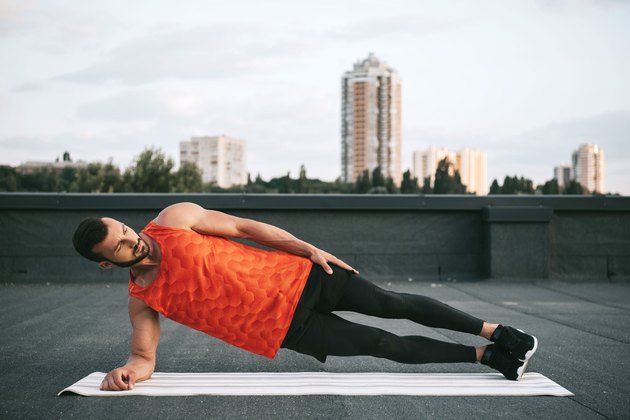For a long time, strength training has been badly evaluated among cyclists. Many people think it's either unnecessary or counterproductive. &Some people say that I can exercise all the strength I need by cycling alone. Or will not increasing muscle mass slow me down? &Full body strength training to make you a stronger cyclist. (picture: Getty Images / light field students) science is not the case. In an August 2014 article in the Scandinavian Journal of medicine and science, which discussed several additional benefits: strength training improves endurance, the authors wrote: "promotes the economy of sports, delays fatigue, improves anaerobic capacity and increases maximum speed." Why ? &'you don't get tired that fast because you need to put in more muscle fibers,' said David Ertl, a top coach at peaks. &Of course, sometimes you will burst out with strength, such as sprinting or mountain climbing, where you need a lot of strength. However, correct training is the key to unlock the benefits of strength training. Cyclists should focus on heavy weights or high weights, low repetitions. The ideal training frequency depends on the season. In winter, Ertl recommends training several times a week when cyclists are not competing. In warm competition months, you can do maintenance training once a week. Every time you retrain, you should give priority to the most important muscles: quadriceps femoris, gluteus maximus, hamstring and hip flexor. (calves are also important, but cycling can make them stronger.) Core strength is also important. &"Stepping on the pedal will push your body back," Ertel said. &So, to stay stable, you pull on your handlebars. All the power from the legs to the arms is transmitted through the core. In essence, your core can stabilize you, especially when cycling uphill. It is recommended to carry out these strength training exercises, aiming at the muscles involved in cycling, and to copy pedal exercise to a large extent. 1. Squats are good for cyclists for several reasons. First of all, it is combined with gluteus maximus and quadriceps femoris, which are the two parts with the most pedaling movements. As Ertel points out, come out of the squat and imitate the foot kick. Stand in front of the squat frame with feet shoulder width apart and toes pointing out slightly.
2. Squatting is a variation of squatting, which involves sitting on a box or bench. Support elements keep your thighs parallel to the floor. &"That's basically where your thighs are when you enter from the top of the pedal travel," says Ertel. "Choose a box or bench of the right height. (when your thighs are parallel to the floor, your hips should touch it.)
3. Cyclists with back problems can use leg compression instead of squatting.
4. Lunge is another form of quadriceps exercise. Standing on both sides of the body, holding a pair of dumbbells.
5. As Joe freer, former chairman of the triathlon national coaching Council, points out in the Bible for cycling training, the exercise mimics pedal sport. &He wrote that when one pedal is in the 6 o'clock direction and the other is in the 12 o'clock direction, you try to duplicate the position of your legs on the bike. Choose a strong box or bench of the right height. When you step on it, your leg should be at a 90 degree angle. Lift a pair of dumbbells on both sides of you. Step on the box with one leg. Press over the raised heel and lift the other leg onto the box, keeping your eyes forward.
6. Curly legs combine with your hamstrings to imitate the action of pedaling. When your pedals are close to the 6 o'clock position, you should pull back like mud on your shoes, ELT said.
7. The forearm support plate is recommended instead of sit ups and sit ups, because the up and down movements of the latter two do not exist in cycling. He said riders need to be stable in a static position, which is what boards do. &Keep your body parallel to the floor, face down, support yourself with your forearms and toes, and place your elbows under your shoulders. Hold posture for 10 to 60 seconds.
- lie on your side with your thighs directly above your calves. Place your forearm on the ground, perpendicular to your body. Lift your hips until you have a diagonal line.
- place the upper hand on the upper hip. (to increase strength, extend your hands and arms so they point to the ceiling.) Hold for 10 to 60 seconds.
- return to the starting position and repeat on the other side. To modify, please put your lower knee (or both knees) on the ground.

8. Although the lateral plate is usually called a unit, the abdominal muscle is actually four different muscle groups. The anterior plate develops the rectus abdominis (the deepest abdominal muscle) and the transverse abdomen (where the dream six packs appear). The lateral plate is aimed at the internal and external oblique muscles or the lateral abdominal muscles.

